Current Biology Students Share Impact of Lab Research Experience on Their Professional Lives
12 April 2022
Students in Fall 2021 BIO 331, Molecular Biology, taught by Subhshri Sahu, PhD, and assisted by Amy McDonough, MS and Mark Lessard, BA, christened one of the labs in the new Bonney Science Center with a career-shaping research and laboratory experience. In the lab, students learn and apply the principle of Central Dogma, the process by which the instructions in DNA are converted into functional biological products, to address a scientific question.
Understanding the concepts listed in the glossary of this report and producing tangible results with them, such as the confocal images, might be my proudest achievement in my short career in biology thus far, and I am extraordinarily grateful to Subhshri Sahu, Amy McDonough, and Mark Lessard for enabling me to reach this point.
Connor Ahern, BIO 331 Student
The Experiment
In BIO 331, students worked with Drosophila Melanogaster (aka fruit flies) which is a classic model system for studying homologous genetic, whole organ, and biochemical pathway systems in humans. They learned the genetics of a yeast-derived, binary gene expression system in Drosophila Melanogaster called Gal4/UAS (see schematic figure below).
Gal4 is a transcription activator that can bind to the upstream activator sequence (UAS) and drive the expression of a transgene downstream. The Gal4 is placed under a tissue-specific promoter in one fly line and UAS with the transgene in another fly line. Mating the two fly lines allows for the tissue-specific expression of the transgene in the progeny or offspring and ‘balancers’ are used to select progeny of interest. A Balancer chromosome is a type of genetically engineered chromosome used to maintain recessive lethal (or sterile) mutations in the laboratory model organism. In this case, the balancer carries a dominant marker, which will result in phenotype (visible trait) which can be used to select those individuals carrying the gene of interest associated with GFP (Green Fluorescent Protein) (see below).
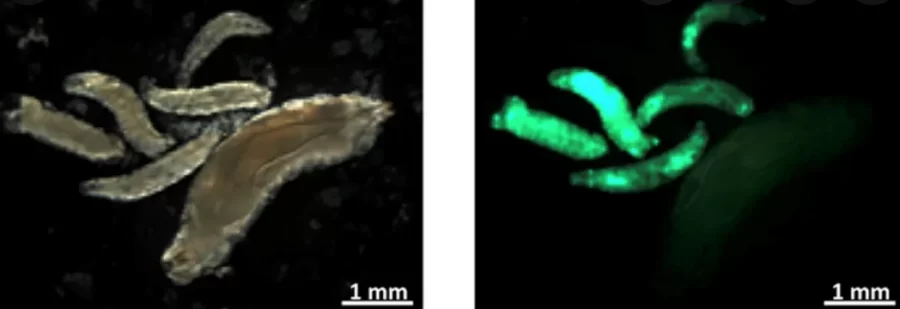
Students tested the UAS/Gal4 system in two different fly line crosses. One was associated with the gene for tubulin, which is a protein expressed ubiquitously in cells (Tub-Gal4/TM3 females x UAS 6X GFP/CyO males) resulting in ¼ of the successful offspring expressed as green-glowing larvae, visible to the naked eye using a UV lamp (see picture above). The other cross was GMR-Gal4 females crossed with UAS-nls-GFP males which should result in green-fluorescent proteins expressed in the adult fly eyes (results not shown).
Students’ work contributed to Professor Sahu’s research by testing the strength of this expression system in order to exploit it for further study of a newly found member of the insulin-like peptide family, dilp8. Dilp8 is a divergent peptide differentially expressed in regenerative tissue in fly larvae, called imaginal discs, and in the ovaries of the adult fly. It can be used to study the effect of nutrition on the flies, providing a good model for study of potential mechanisms involved in the disease diabetes.
Read more from the students of BIO 331 and see a sample of their microscope lab experience below. Each confocal image was captured during lab by the corresponding quoted student.
Confocal Image Gallery
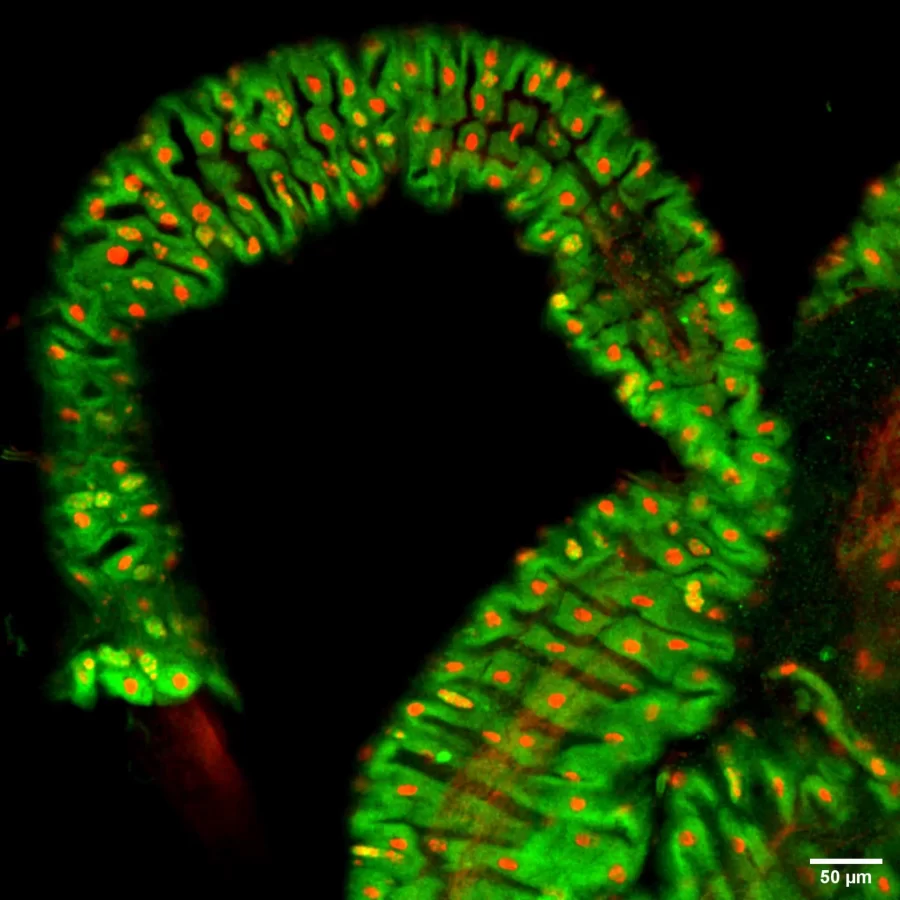
“I believe my greatest takeaway from the course of this lab was the immeasurable experience I gained working in a lab environment unlike any other I have worked in before.”
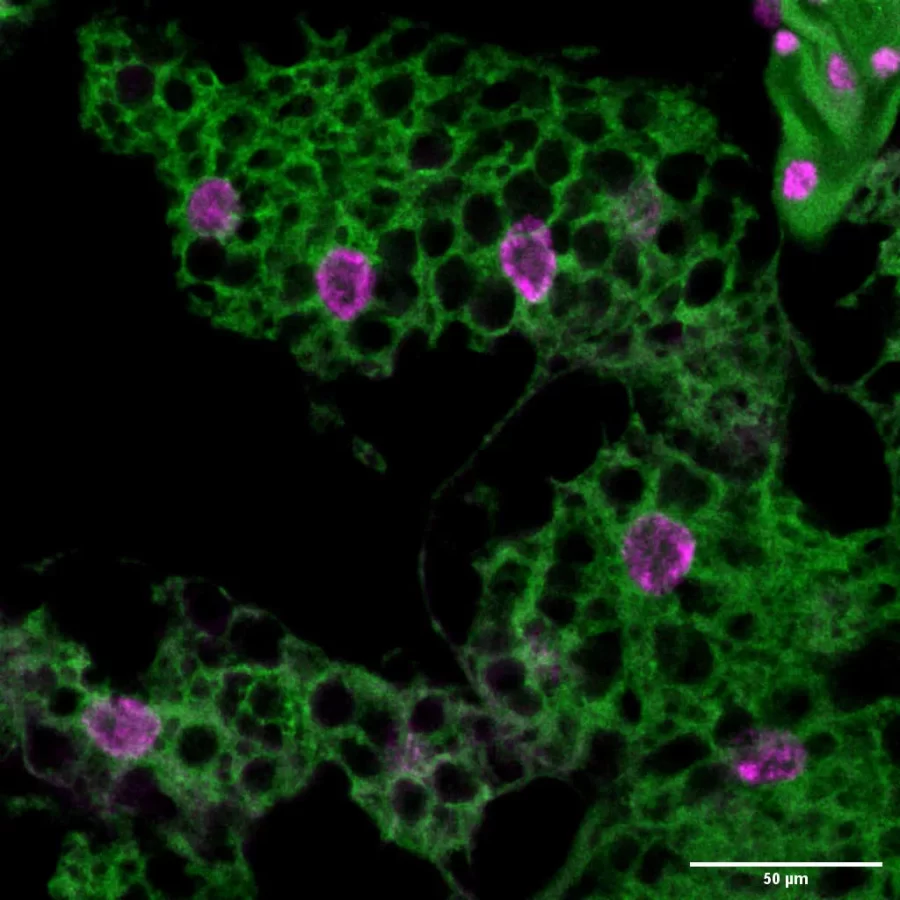
“I…thought the Gal4-UAS system was cool with the idea of spatiotemporal gene manipulation, which allows for gene expression anywhere. The lab in this course reminded me of how research labs operate…. Whether it was for fly flipping, virgin collection, or larvae collection, the flies had to be consistently managed. When it was time to see our results, it was very satisfying.”
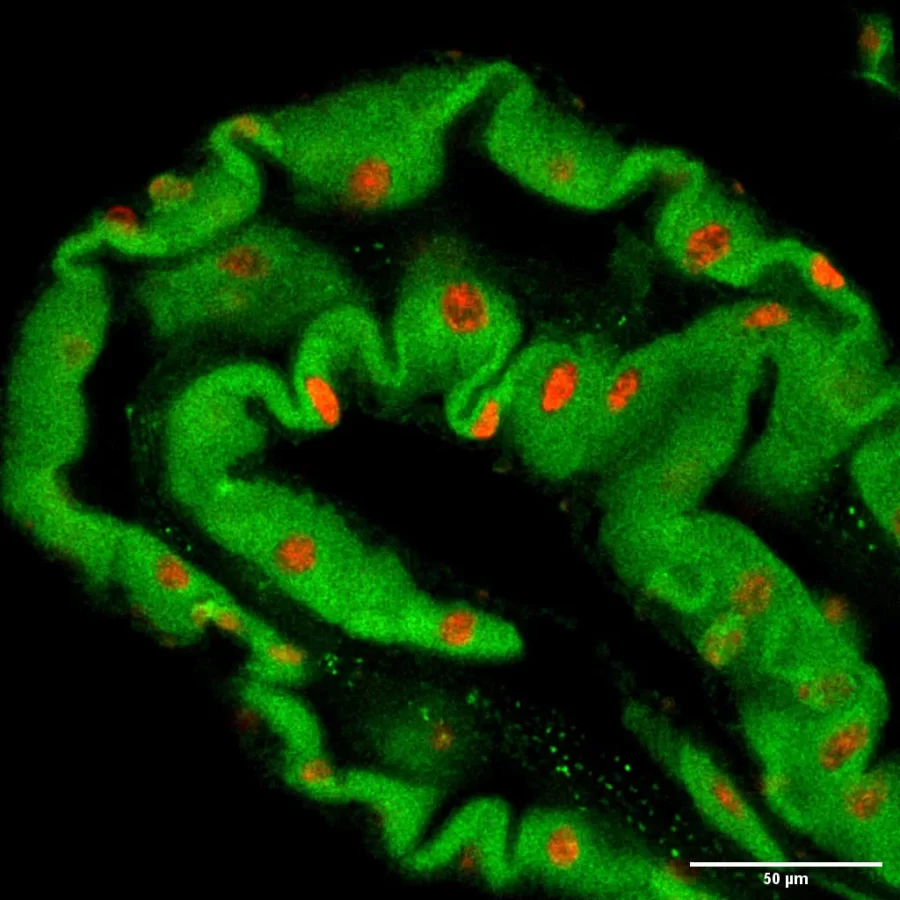
“Overall, this experiment taught [me] that I am capable of more than I think I am. I created my own schedule and made time to come into the lab after class hours, ultimately improving my time management. I was able to improve my scientific writing as we had multiple writing assignments due each week.”
-Aaliyah Black
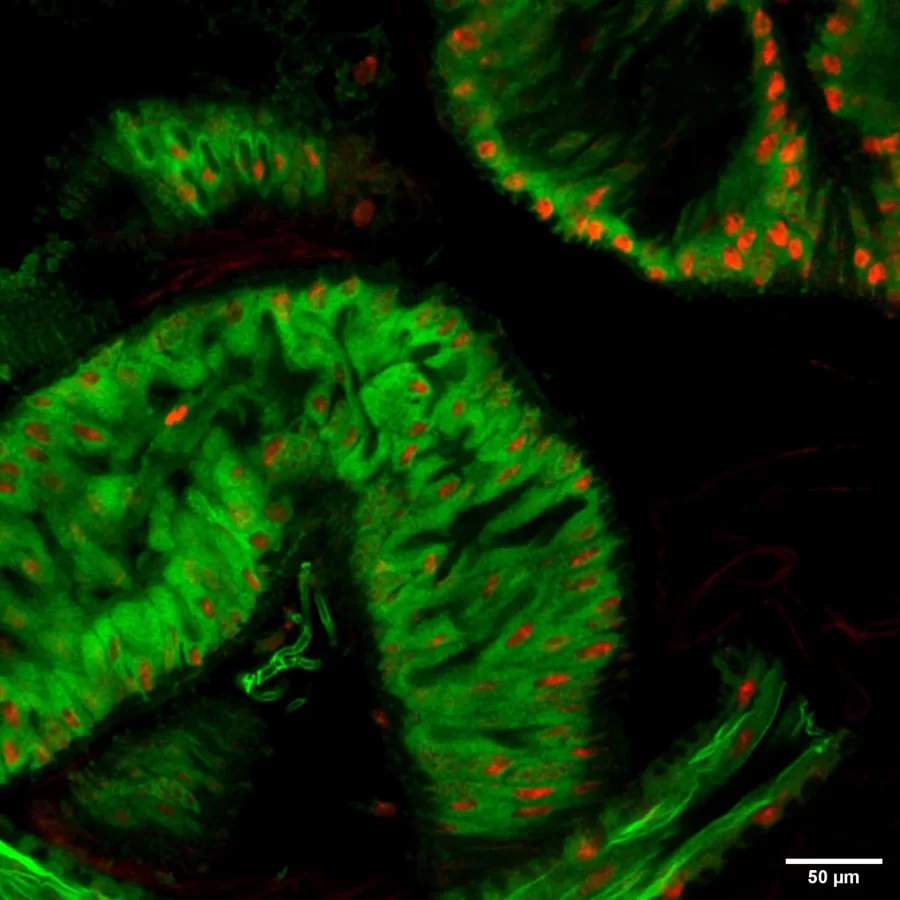
“After having taken this class and completed this lab report, I believe that I have a significantly better understanding of how to work in a research lab. I am still uncertain as to what exactly I want to do, but this course has helped me see that there are more opportunities in the biological sciences than medical school, which has felt like the only option.”
-Eloise Botka
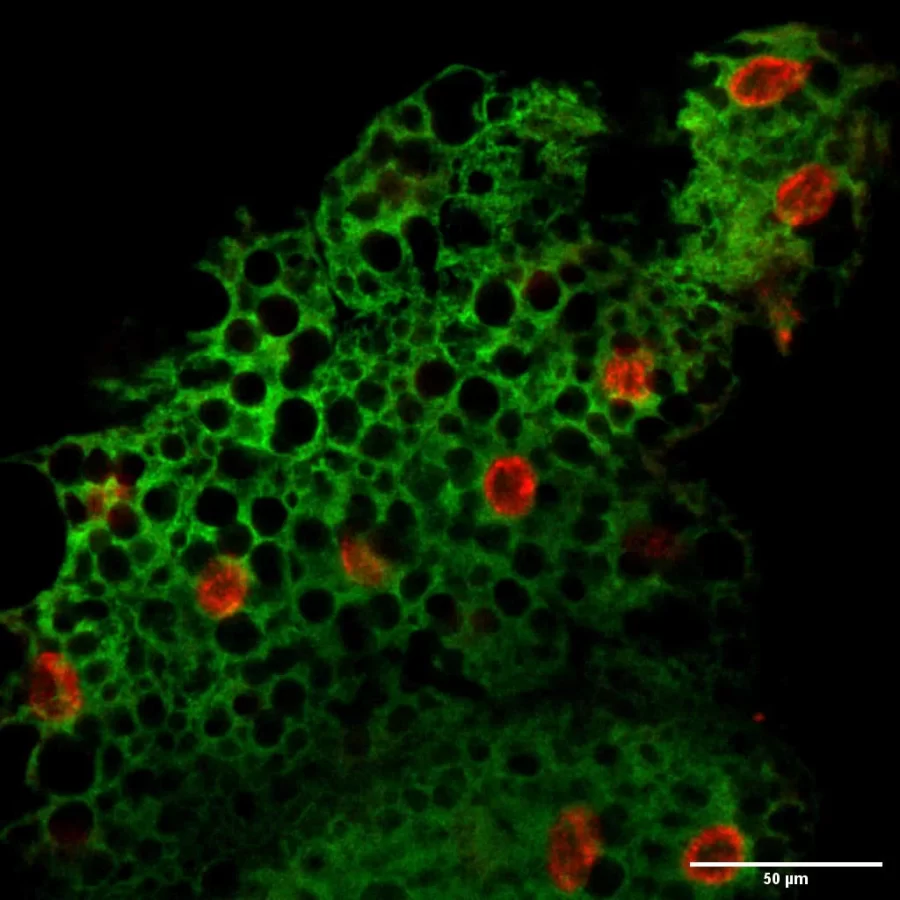
“I gained invaluable further experience with RNA isolation, RNA quantification, PCR amplification, gel electrophoresis, and confocal microscopy. Of these techniques, I have done many of them multiple times, but I have only had one opportunity to do confocal microscopy. So to have this additional experience and get to work with Mark was really quite amazing.”
-Sam Colesworthy
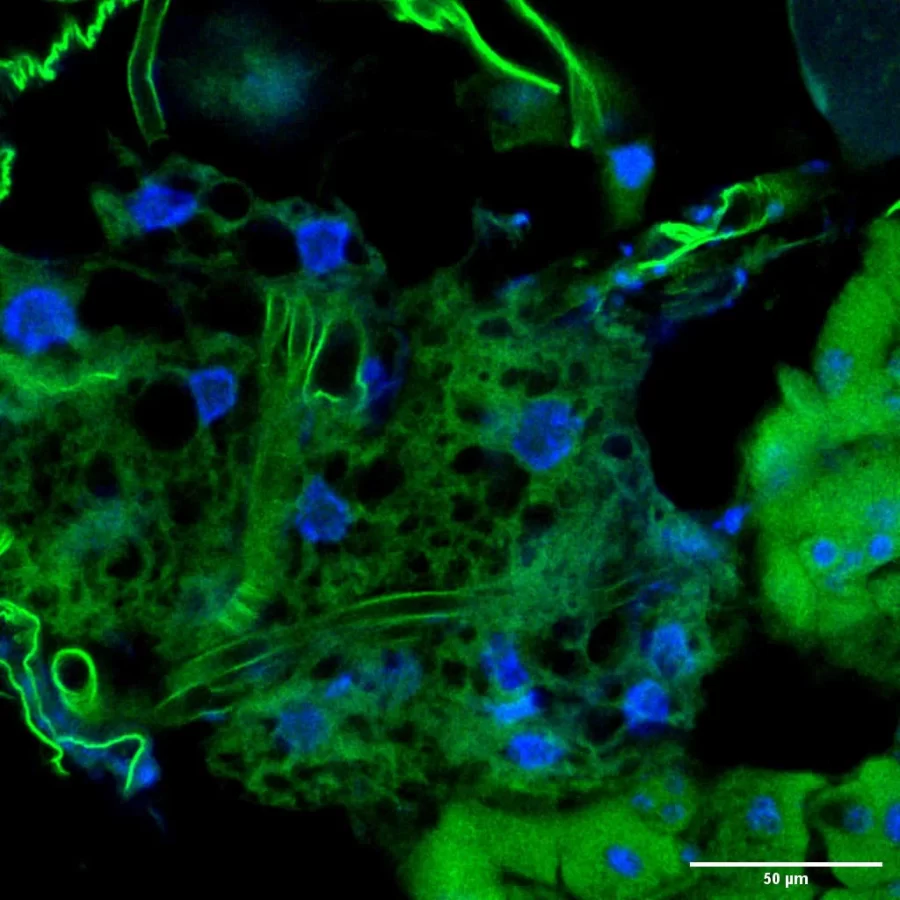
“This semester, I received a true research experience, and the closest to a real life lab job that I have yet to face so far in my life. The genotype raffle project…gave us a sneak peek, maybe even a jolt, into the real world, forcing us to start our work early, ask for help when needed, but also taught us not to fear failure. I feel much more prepared to work in a lab in the future….”
-Paige Cote
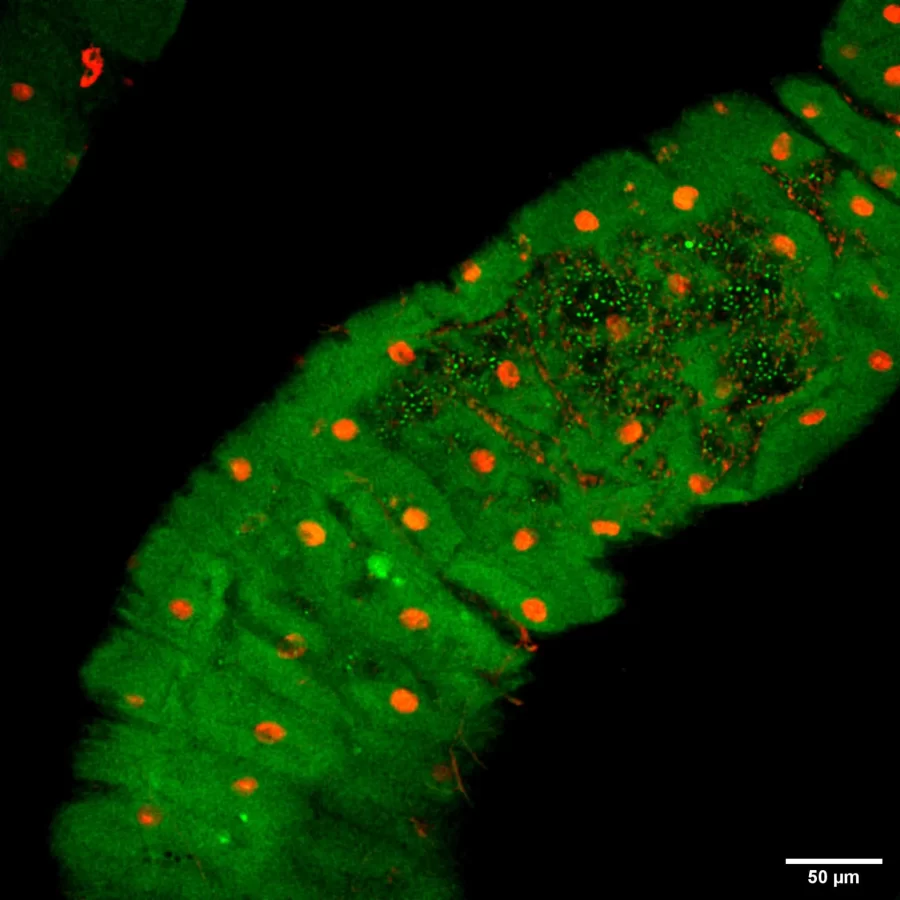
“Completing a multiple-week process that had to be attended to multiple times in a week (fly flipping and virgin collection) is reminiscent of what real research looks like and will serve me greatly as I continue to complete my senior thesis and if I end up working in a laboratory setting following graduation.”
-Anna Gouveia
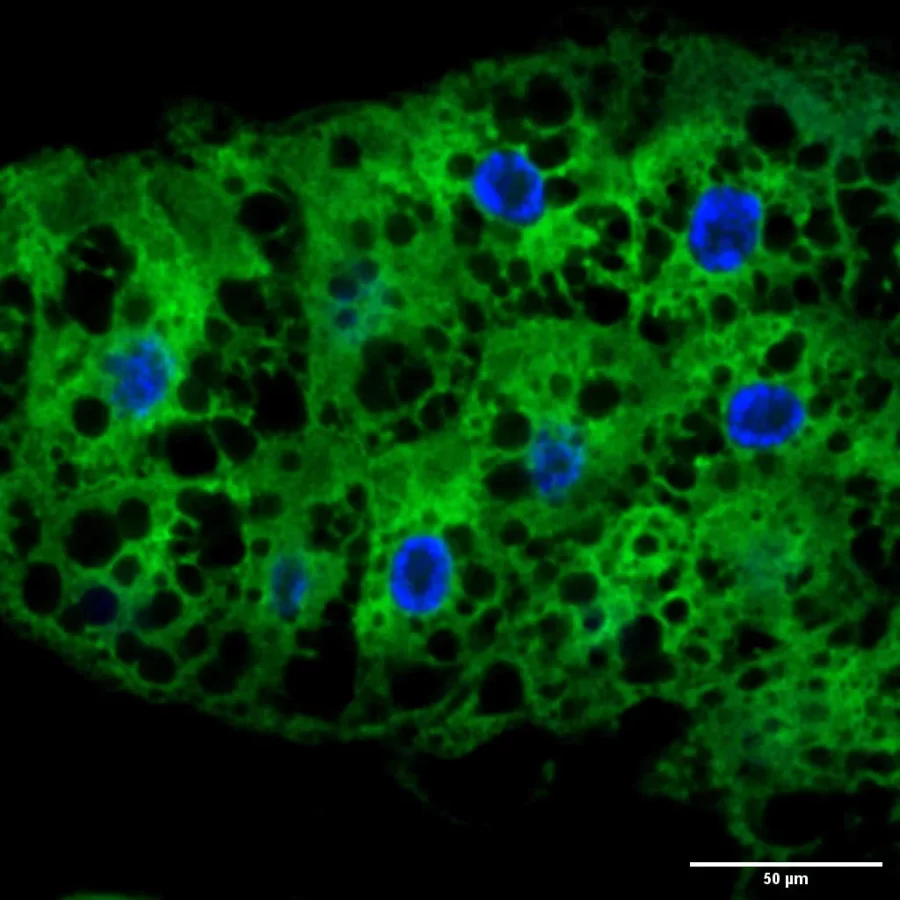
“Being able to understand the concepts behind confocal microscopy, cytochemistry, and RNA analysis techniques helped with comprehending why we carried out experiments. Living systems require patience, persistence, planning, and organization for successful experiments to be carried out.”
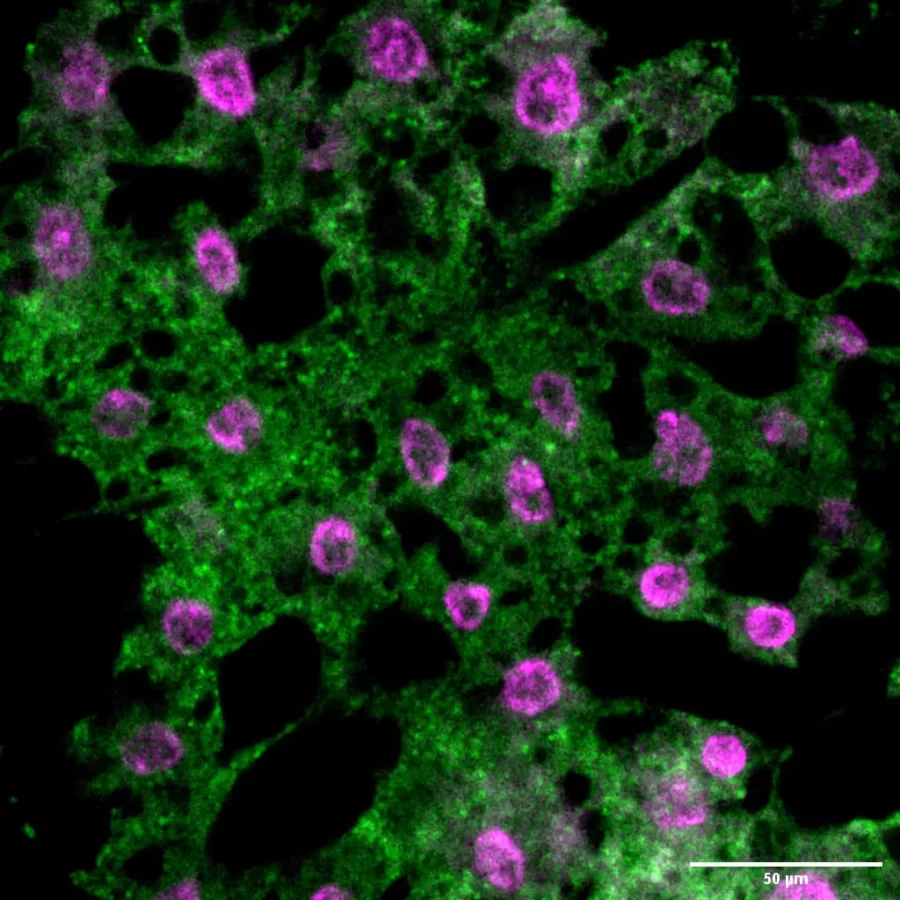
“The communication skills needed to complete the experiments with my lab partners…taught me how to become more flexible and not only a more dependable partner, but a more dependable person. Collaboration in this lab proved to be on of the most important features of it.”
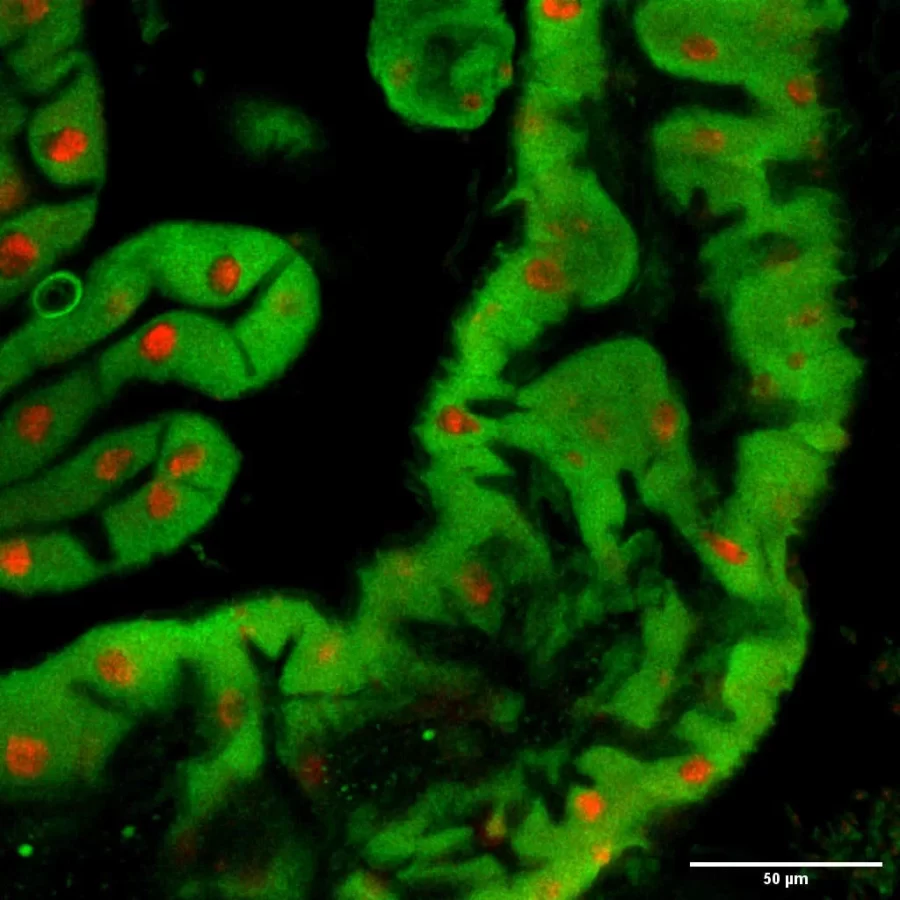
“My dual microscope skills and precision with pipetting and forceps noticeably improved throughout this lab experience, and I learned a lot about how we can utilize transgenic flies to examine gene expression in ways that potentially [relate] to human medicine.”
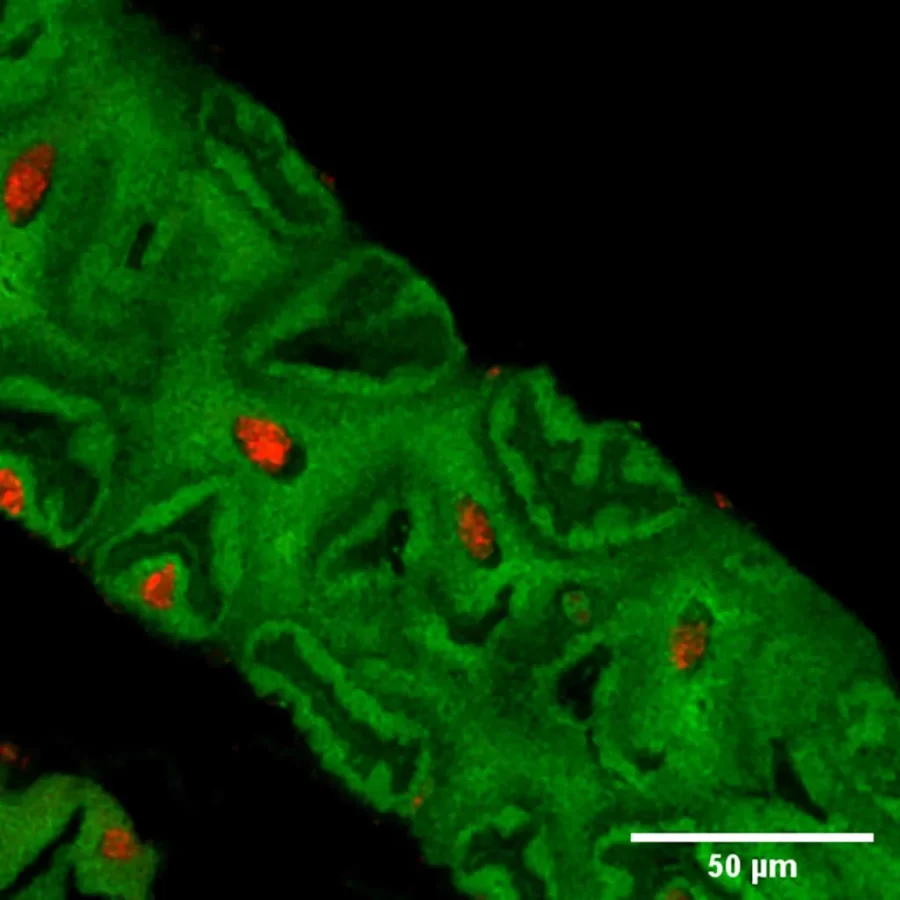
“The lab presentations were a good learning experience in how research is shared with other researchers and how to scrutinize my own research. Writing the methods and concept glossary gave me a better understanding of what we were doing in lab, how we were doing it, and why we were doing [it], which overall enhanced my learning experience.”
-Charlie Lewis
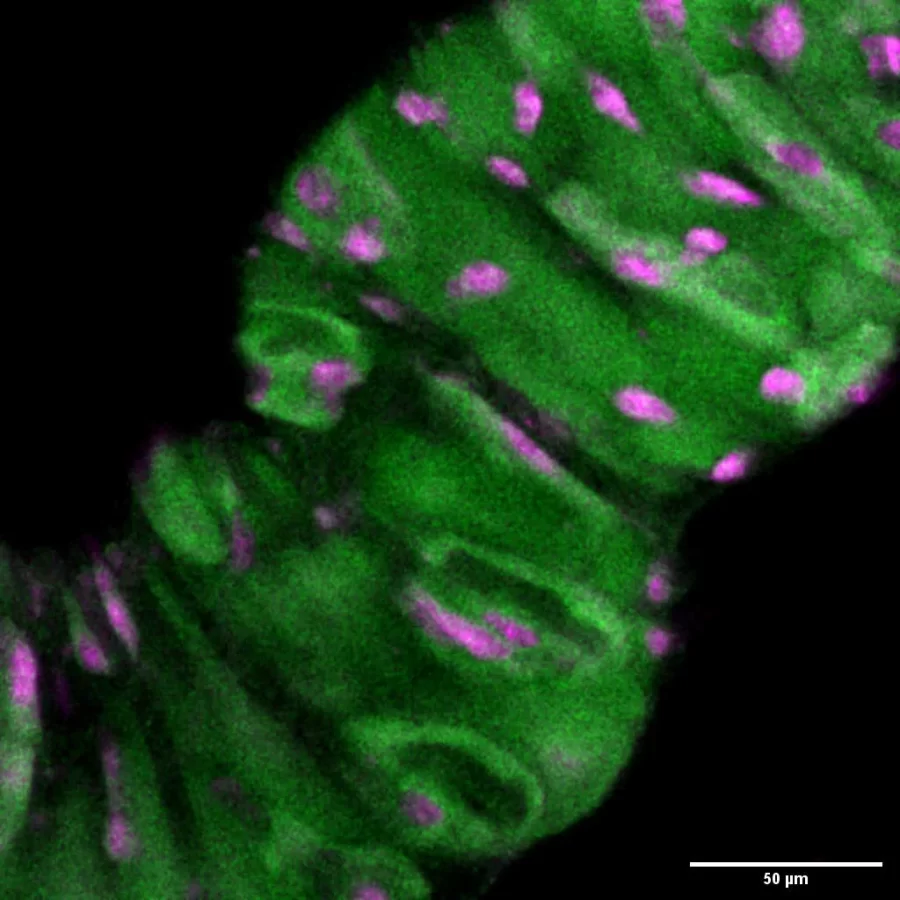
“Due to this class, I feel confident in applying for research positions because I feel that I have gained valuable experience in conducting research within this course.”
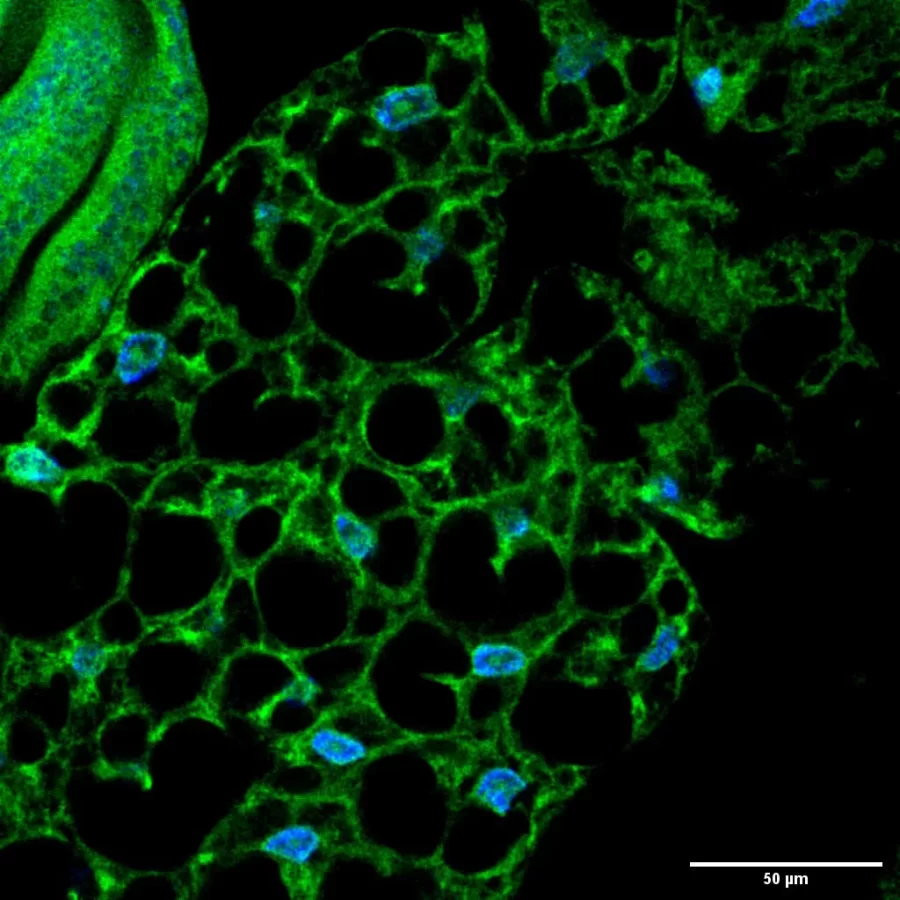
“I greatly appreciated the opportunity to learn how to use the confocal, and I plan to continue to use it in the future when possible. This course scratched the surface of what that equipment is capable of, and I would like to see what it can do further.”
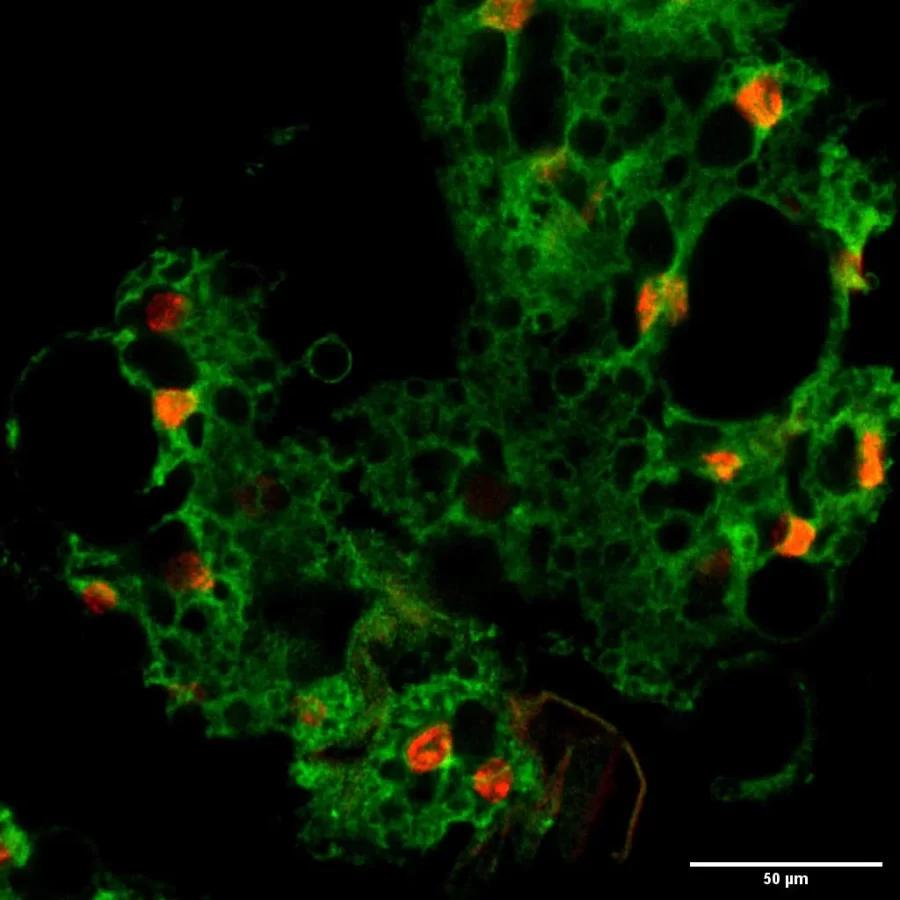
“What I enjoyed most about this class was that we were taught how to do microdissections…on Drosophila melanogaster larvae. I got to live out my dreams of being a surgeon momentarily and was taught that if I really wanted to become a surgeon, then I should start training my hands.”
-Anna Pua’ala
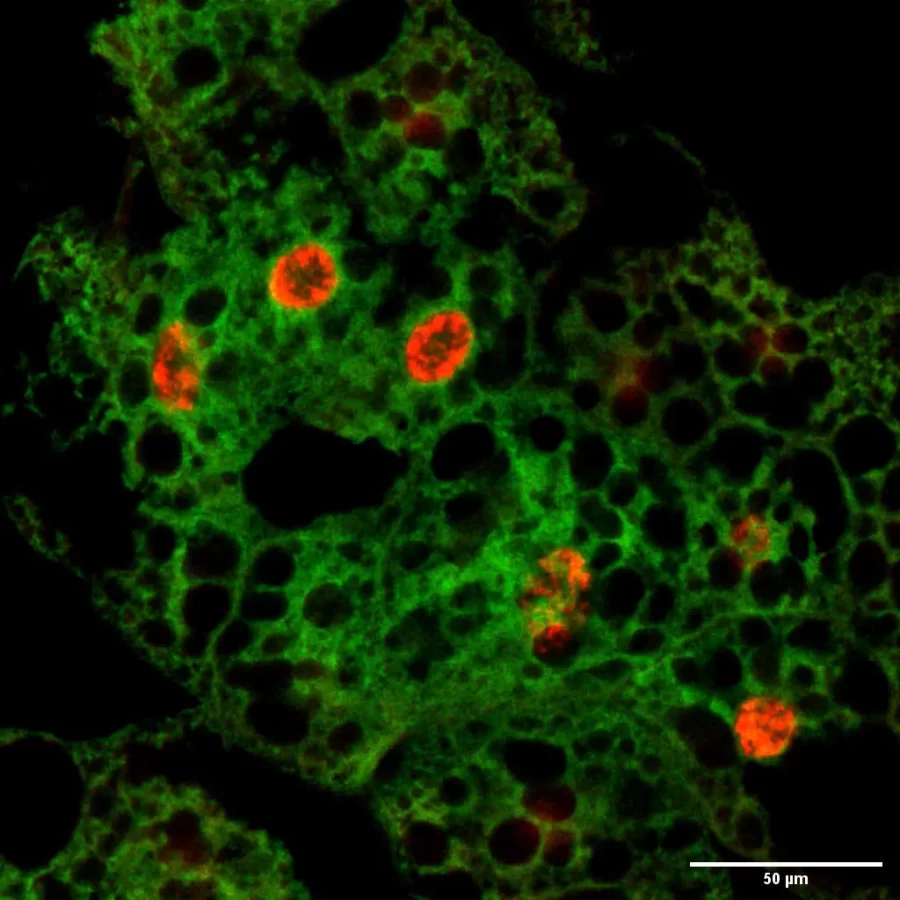
“[BIO 331] also helped me understand more of the concepts of a genetic driver like the systems we used in the lab. Using an application of transcription and translation through expression helped me learn more in an applicable way about the central dogma.”
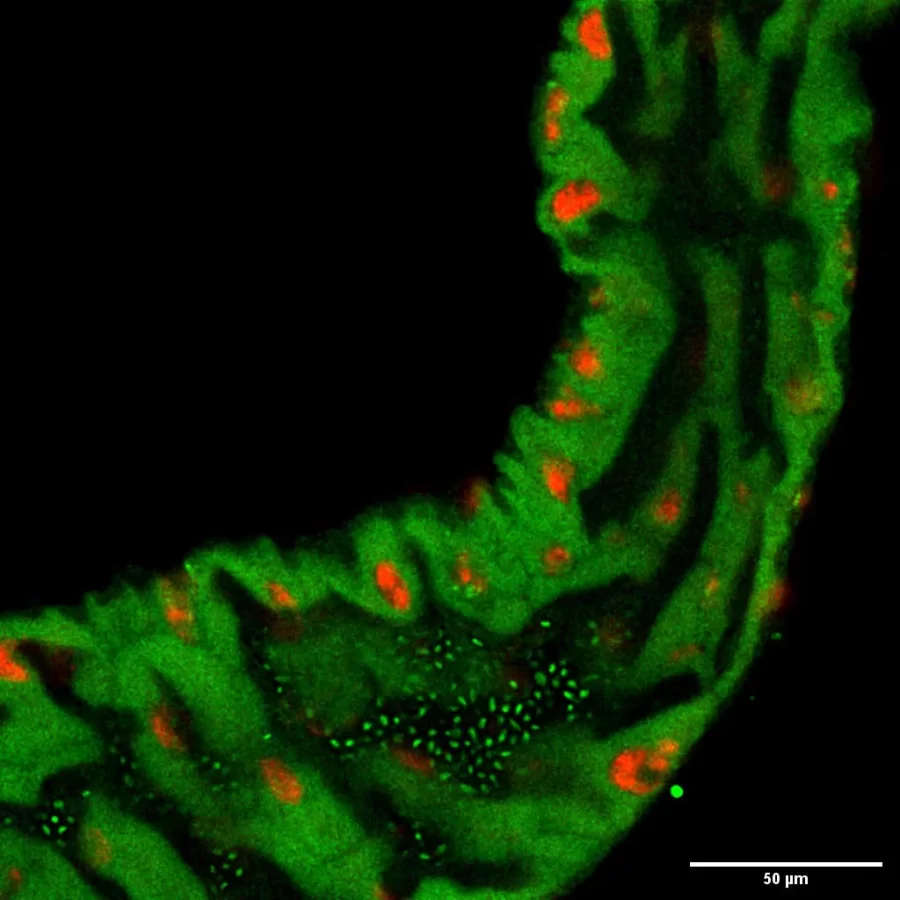
“This lab taught me more…than I would have imagined, and for that, I am forever grateful. In this lab, I learned to be efficient, quick, and thorough, and I know that this will be a skill I will need as I move on to research. This lab gave me a glimpse into a part of my future.”
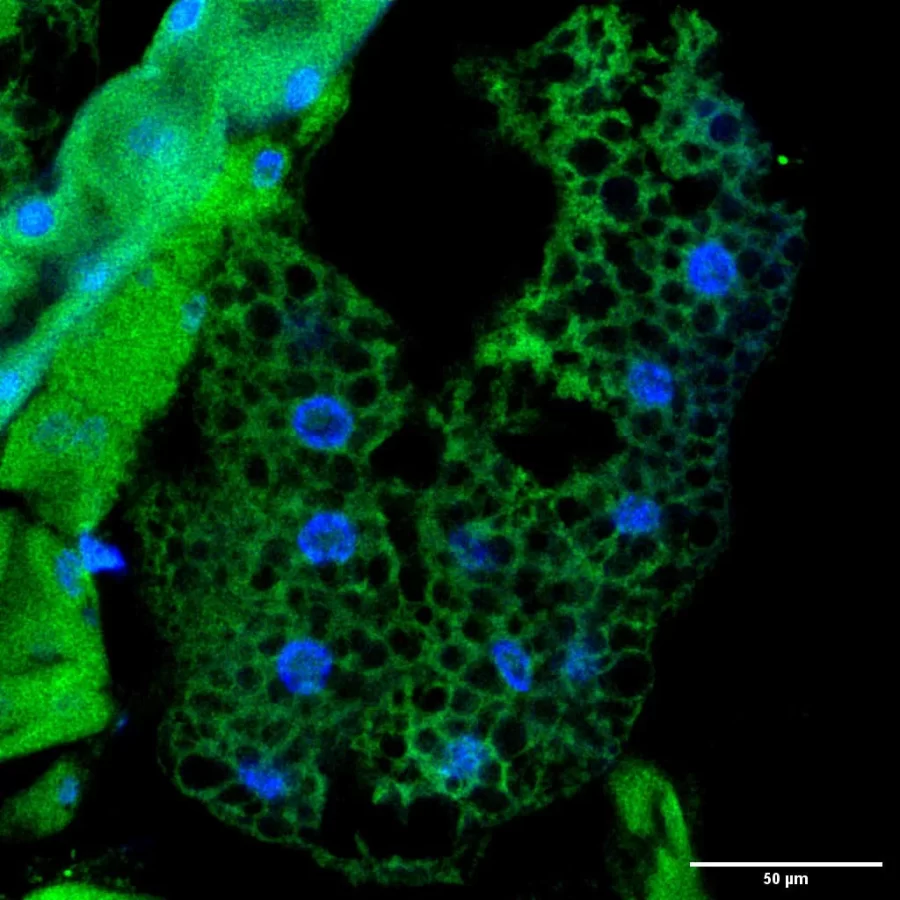
“I was…able to collaborate with classmates, [which] allowed me to enjoy the experience more and feel a greater sense of connection to the class. I have learned more about what a career in biological research looks like, and what I could expect if I intend to pursue this route.”
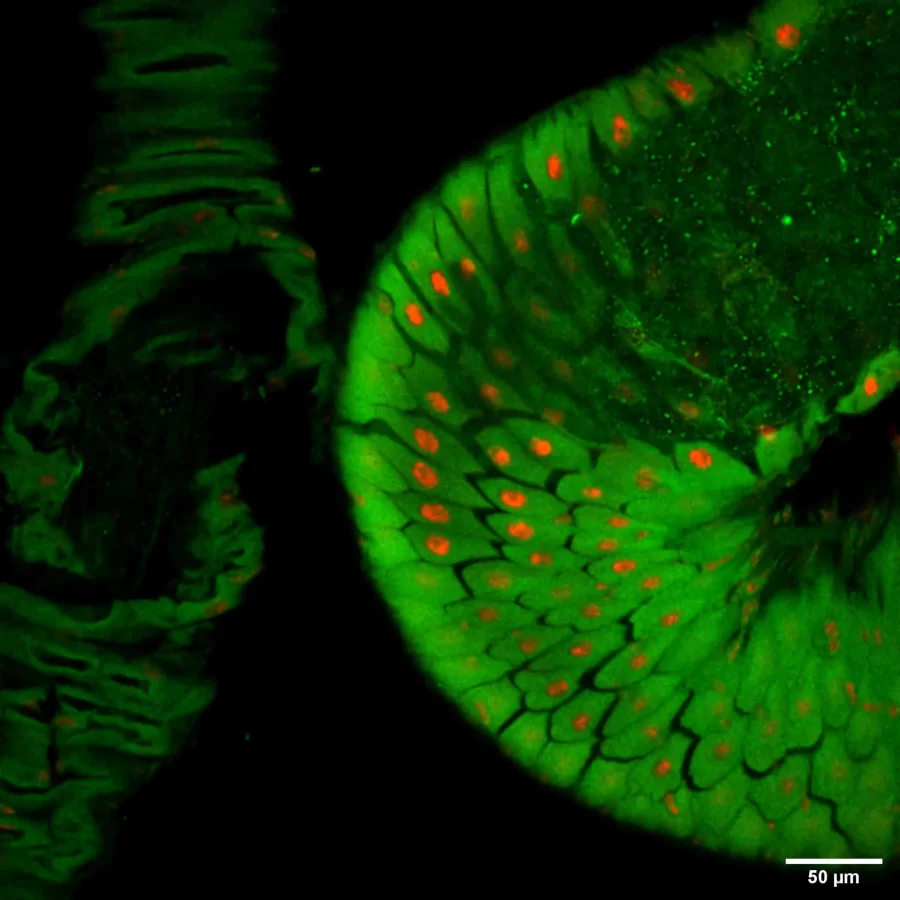
“Before this class, I chose this course…simply to fulfill the requirement for my biochemistry major, but now, as the semester comes to an end, I realized how much I have learned, and I greatly appreciate such lab experience that I may never have had a chance to encounter in other science classes.”
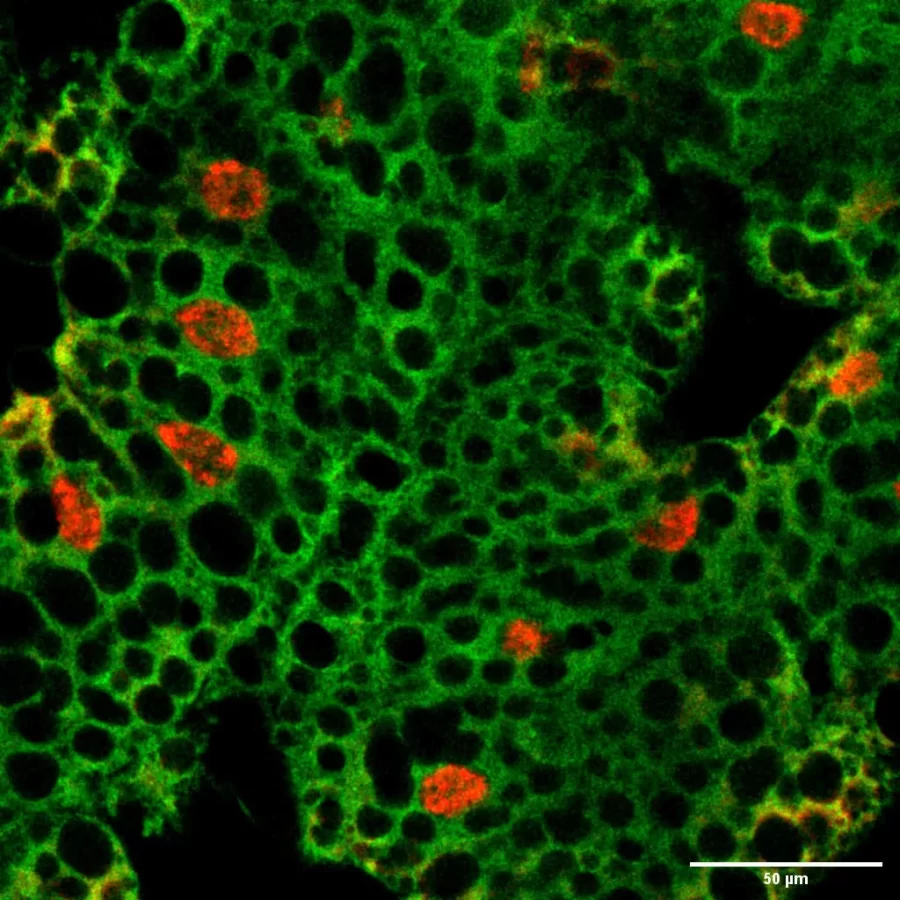
“Confocal microscopy and the following analysis were the much smaller version of what I spent significant amounts of time doing for astrophotography when I was younger, and I loved to see the connections between the sciences, particularly connecting the galaxy scale to the molecular scale and seeing so many patterns.”
-Charles “Ollie” Young
